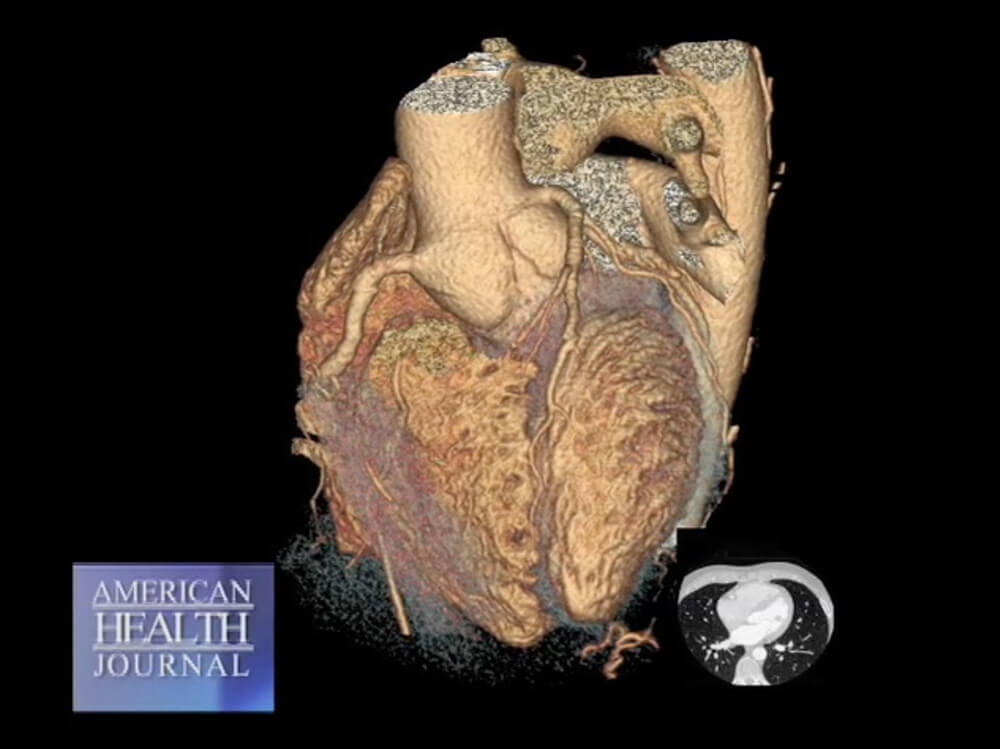Diabetes Transcript
Diabetes – Joshua Rokaw, MD Video
Opening screen with title “American Health Journal – AmericanHealthJournal.com”
Announcer: It’s not easy to hear you have diabetes. But for millions of Americans, learning about their diabetes is the first step toward feeling better and living longer, healthier lives.
Visuals: Announcer is a male in a suit sitting at a news desk in front of a blue background. He is introduced with the title “Roger Cooper – American Health Journal” in lower-third. An inset with the title “Diabetes” is in upper right corner of screen with clips of women eating; a couple in jogging suits walking; another couple riding bicycles.
Announcer (V.O.): We spoke with Dr. Joshua Rokaw of Valley Presbyterian Hospital to hear the risk factors, treatments and prevention of diabetes.
V.O. visuals: Exterior of hospital with Dr. Rokaw walking toward the camera; exterior wide shot of hospital buildings; close-up of a woman eating a cookie; another woman using a glucose monitor to check her sugar levels.
Joshua Rokaw, MD: Diabetes is where sugar that normally should be transported from the blood into the cells, for the cells uses fuel to do their machinery, and do the metabolic work, backs up in the blood stream. And, as it backs up, the sugar rises and we label that diabetes. There are a couple of different mechanisms that can happen that can cause that…
Visual: Rokaw, wearing a dress shirt and tie with a white coat, is being interviewed in a studio with a burgundy wall and foliage; he is introduced with the title “Joshua A. Rokaw, MD – Valley Presbyterian Hospital” in lower-third.
Rokaw (V.O.): …which is why we expatiate diabetes into Type 1 or Type 2. The Type 1’s are the less common of the group and what used to be called…
V.O. visual: Rokaw sitting at his office desk looking at a computer screen.
Rokaw: ….‘juvenile’ diabetes, like ‘Juvenile Diabetes Research Foundation.’ And in those patients, what happens is the pancreas fails in its ability to manufacture the hormone insulin.
Rokaw (V.O.): In the more common adult type diabetes, what is now called Type 2 diabetes, what happens is that the…
V.O. visual: Rokaw in an examining room speaking with a female patient.
Rokaw: …cells, the doors that the insulin works out, are somewhat resistant to the action of the insulin. Now, some people can have relative deficits in how much insulin they have but the insulin isn’t working that well through the doors of the cell so the sugar can’t get in as efficiently and so it backs up. Hence the term ‘insulin resistance syndrome’ or what the cardiologists are calling ‘metabolic syndrome.’
Rokaw (V.O.): There are a variety of problems you can get from unchecked diabetes.
V.O. visual: Women at conference table talking, with food in front of them.
Rokaw: The way I like to explain it to patients is that I take it from the top of the head and work my way down. So…
Rokaw (V.O.): …unchecked, you can affect the blood vessels that feed the brain and you can get strokes, both small and large. Next in line would be the eyes. About a third of diabetic patients will get some type of diabetic damage to the back of the eyes, the retina.
V.O. visuals: Motion graphics of a brain with blood flow blockage in veins; close-up showing veins without blood flow; close-up of damaged brain without blood flow (images below);
.jpg)
.jpg)
.jpg)
(V.O. visuals continued) close-up motion graphic of a female eye with the pupil color changing from black to red, showing damage to the retina (image below).

Rokaw: Next up would be the heart. Again, this is a big issue because ultimately, people do have heart issues who aren’t diabetic, but people who are diabetic…
Rokaw (V.O.): …are essentially treated is if they’ve already had a heart problem. Next would be the kidneys. Type-control benefits the kidneys and does it fast. Diabetes was the most common cause of people needing dialysis in this country. Now diabetes is the most common cause of people needing dialysis over a certain age, 65.
V.O. visuals: Motion graphic of a heart in rotation (image below);

(V.O. visuals continued) illustration of the human body showing the inner organs; close-up illustration of the kidneys; healthcare worker giving a male patient dialysis; another male patient connected to a dialysis machine; an elderly patient laying in a hospital bed.
Rokaw: Next up would be neuropathy, also the blood vessels that feed…
Rokaw (V.O.): …the lower extremities. You can get poor circulation to the legs but you also get a loss of sensation along the nerves. You can lose the sensation there, which is the most common thing, just the numbness but people can also get…
V.O. visuals: Close-ups of physician taking blood pressure of a woman’s calf and ankle; close-up of a physician wrapping gauze around a male patient’s foot whose leg and foot are discolored; camera pulls back to show physician, nurse and patient whose foot is being wrapped.
Rokaw: …what’s called diabetic peripheral neuropathy, which is a painful condition, described as either burning or tingling.
Rokaw (V.O.): America has gotten fatter and fatter. And that means more and more Type 2 diabetics because the fat cells secrete hormones that interfere with how the insulin keys fit in the doors of the cells. If you can shrink the fat just a tiny bit…
V.O. visuals: Obese woman walking on the street; an obese man walking with a lunch bag; camera pan as an overweight woman walks along the street; Dr. Rokaw in unit hallway talking with a male healthcare worker
Rokaw: …we get a lot less of those interfering hormones, which means we get a lot less diabetics.
Announcer (V.O.): According to Dr. Rokaw, diabetes can be managed.
V.O. visuals: Overweight man in office using a glucose monitor to check his sugar levels; close-up of his hands and monitor.
Rokaw: What I’ve been lately telling my patients is that what they eat is for their waistline, and what they do for exercise is for their heart. Exercise protects the heart not just in diabetics but again in diabetics, they’re at an increased risk relative to the average person. So the more…
Rokaw (V.O.): …exercise they do, de-facto they’re protecting their hearts. In addition to that, separately, general exercise such as walking a half hour a day which is the American Heart Association recommendation, a half hour of general walking…
V.O. visuals: Group of people and an instructor in a large room doing dance moves; close-up of their feet moving; woman quickly walking in a park toward and by the camera.
Rokaw: …cumulatively, ten minutes here, fifteen minutes here, will then improve not only their heart status and improve their sugar status, and by the way their cholesterols, it can get them a world of good and avoid my then having to say, ‘you know what, I need to refer you to a specialist, a cardiologist.’
Visual: Rokaw being interviewed in the studio.
End screen in black.

